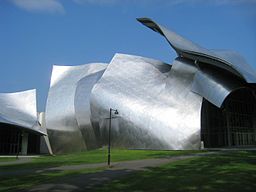Listening to the myriad “2021 in reviews,” I recognized that we have come a long way — and when I say “we” I mean our global society. But, I’m going to focus on the personal “we” as this post is really a stand in for the “didn’t get to that” holiday card this year. The following is a year in words, events, and pictures. Overall — a lot of outside adventures (imagine that), home renovations, and a time filled with Sandy, Smudge, friends and fun but not without some scars and losses.
(the following recap is organized in a semester mindset . . . as that’s “As Our Lives Turn”)
January – May
Winter is real in Pittsburgh, Pre-vaccine we got ‘serious’ about porch social solutions with amazing success — one firepit + one tarp = practically warm (even as low as 23!). BYO-coat, blanket, hat, gloves.



Brett continued the hybrid-teaching journey. It often felt like Night of the Comet meets Hamburg Hall with snow outside replacing the sand of the comet. With only a few students and sometimes one other professor wandering the halls, PPE everywhere and anywhere, life felt surreal. And, let me say for the record, hybrid teaching is an adventure — mostly filled with dark humor due to technology snafus (that’s a whole other technology rant).
While Brett was venturing on campus, Sandy was renovating tables and repainting walls. One must do something when Pickleball is not an option.





New Year’s and Spring Break were with our “pod” in NYC. Quarantine, visit, quarantine. 🙂 Ah, the good old days. Our world changed with vaccine 1 and 2 in March / April. That plus warm weather made the world beautiful and bright. And, let me remind you, vaccine’s weren’t just a walk in party back then. I drove to Ohio with my walking buddy Jody (carpooling in separate cars for shot #1) and Sandy drove to State College. Smudge, well acquainted with vaccines, went with Jody and me for moral support both times, of course. (not sure how she ended up UNDER the dog hammock?)


Summer
We thought we would do so much, but our high-risk category kept us a little closer to home. We visited the cabin in the ADK 4 times, got an Airbnb in the Poconos with our Pod, and Brett redesigned her ‘hybrid’ fall classes back to in person and with one week less than years prior. (in person, online, hybrid with no spring break, back to in person with one less week . . the course redesign roller-coaster will continue through fall 2022).
When we weren’t traveling, it was pretty much hiking, biking, dog training and, of course, pickleball (with some tennis in there for Brett)






Fall
Fall semester was an interesting transition. While Brett thought it would be easier for her than for others (she had been going to campus all last year), the shift from empty to full (and fully masked) was still a big energetic pivot. Everyone was happy, but there were small operational challenges (like no coffee operations on our end of campus for the first 6 weeks — Starbucks stock soared I hear). Sandy was back to teaching, thus the house projects have come to a halt. Pickleball now happens regardless of temperature.
Omicron put a halt to a Christmas with family in Austin, but luckily FaceTime and zoom allowed for us all to stay in touch.
Wins & Losses
2021 also came with losses (6) for the Br-andy duo. Our friends lost parents and children, we lost friends — 2021 left some serious scars.
2022 will assuredly bring us adventures, and hopefully more in-person connection with all of you we know and love.
 r. We often think we are successfully communicating because we get ‘likes’ and a decent ‘open rate’ to our emails, but are we moving audiences into our spaces to consume the amazing works we have produced? Less and less. What is their path and who are they?
r. We often think we are successfully communicating because we get ‘likes’ and a decent ‘open rate’ to our emails, but are we moving audiences into our spaces to consume the amazing works we have produced? Less and less. What is their path and who are they?

